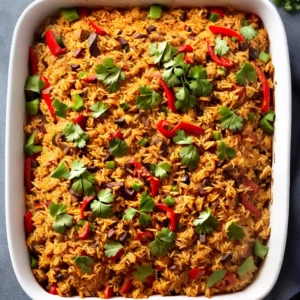How Many Tablespoons in a Quarter Cup
Are you wondering how many tablespoons are in a quarter cup? Look no further, as I have the answer right here!
Knowing the measurement equivalence between tablespoons and a quarter cup is essential for accurate ingredient measurement in American cookery. As a master chef, I understand the significance of precise measurements in achieving the desired texture, taste, and consistency in recipes. Let’s explore this essential measurement together.
How Many Tablespoons in a Quarter Cup – Key Takeaways:
- There are 4 tablespoons in a quarter cup, making it a commonly used measurement in cooking and baking.
- The tablespoon is equivalent to 0.5 fluid ounces or 15 mL.
- A cup is an important tool for measuring ingredients and can vary in measurement in different systems.
- In the US Customary System, 1 cup is equal to 16 tablespoons, while in the Metric System, 1 cup is equal to 237 mL.
- Using the right measuring cups is crucial for accurate results, as there are specific measuring cups for liquid and dry ingredients.
Understanding Tablespoons and Quarter Cups
Tablespoons and quarter cups are both crucial measurements in the kitchen, so let’s take a closer look at what they mean. As a master chef, I know that precise measurements are essential for successful cooking and baking.
Tablespoons are commonly used in recipes to measure ingredients. They are equivalent to approximately 0.5 fluid ounces or 15 milliliters. This versatile measurement allows you to accurately add the right amount of spices, oils, or liquids to your dishes. Understanding tablespoons is key to following recipes accurately and achieving the desired flavors.
A quarter cup, on the other hand, is a specific volume measurement. It is equal to four tablespoons or approximately 2 fluid ounces. Quarter cups are often used to measure both liquid and dry ingredients in cooking and baking. Knowing the conversion between tablespoons and a quarter cup can help you achieve accurate ingredient measurement and ensure your recipes turn out just right.

| Measurement | Equivalent |
|---|---|
| 1 tablespoon | 0.5 fluid ounces or 15 milliliters |
| 1 quarter cup | 4 tablespoons or 2 fluid ounces |
Using the right measuring cups is important for accurate results in your recipes. Make sure to use separate measuring cups for liquid and dry ingredients. Liquid measuring cups usually have a spout to allow for easy pouring, while dry measuring cups are designed to be leveled off with the edge of a knife or spatula. By using the appropriate measuring cups, you can ensure consistent and reliable measurements every time you cook or bake.
The Measurement Equivalence
To convert tablespoons to a quarter cup, you’ll be amazed to know that there are 4 tablespoons in a quarter cup. This measurement equivalence is particularly useful for accurate ingredient measurement in the kitchen. Whether you’re following a recipe or creating your own culinary masterpiece, understanding this conversion is essential. With 4 tablespoons equaling a quarter cup, you can confidently measure ingredients and ensure the perfect balance of flavors in your dishes.
Tablespoons are a commonly used unit of measurement in cooking and baking. They are versatile and allow for precise ingredient quantities. In addition to being equivalent to 4 tablespoons, a quarter cup is also equal to 2 fluid ounces or 60 milliliters. This means that when a recipe calls for a quarter cup of an ingredient, you can easily measure it out using tablespoons. It’s important to note that when measuring liquids, it’s best to use a liquid measuring cup to ensure accurate results.
| Measurement | Equivalent |
|---|---|
| 1 tablespoon | 1/16 cup |
| 2 tablespoons | 1/8 cup |
| 4 tablespoons | 1/4 cup |
| 8 tablespoons | 1/2 cup |
| 16 tablespoons | 1 cup |
Understanding the measurement equivalence between tablespoons and a quarter cup opens up a world of possibilities in the kitchen. It allows you to follow recipes accurately and create delicious meals with precision. Keep this conversion in mind the next time you’re preparing a recipe that calls for a quarter cup of an ingredient, and you’ll be well on your way to culinary success.
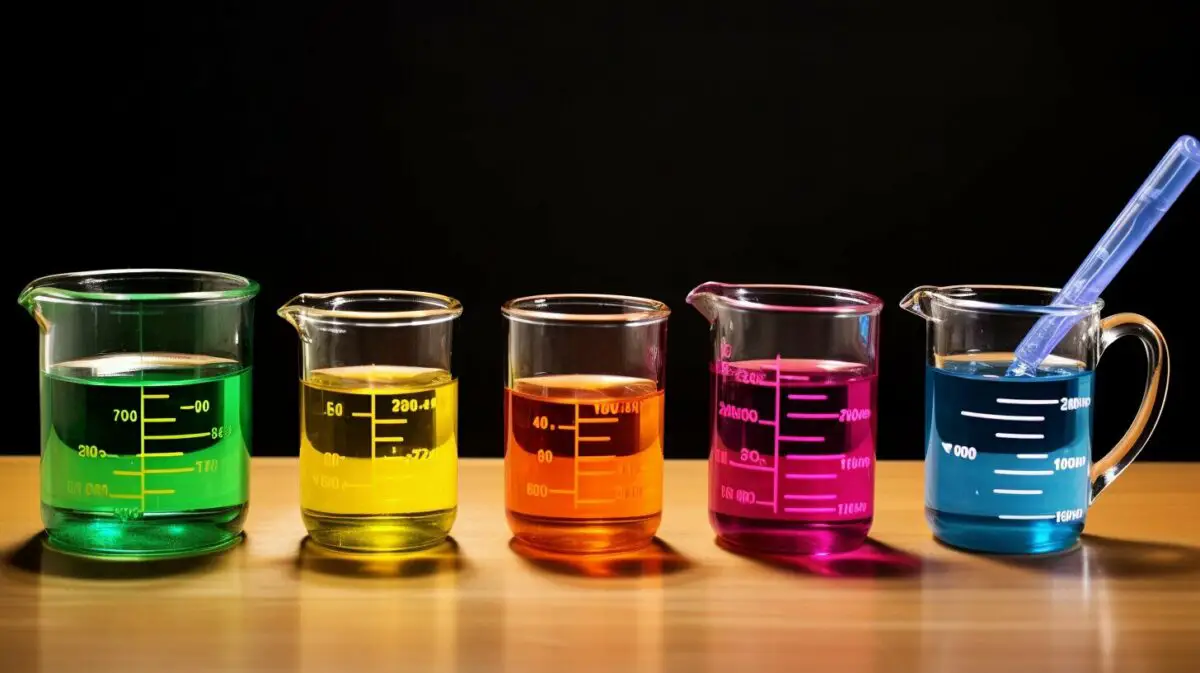
Accurate measurements, such as the conversion between tablespoons and a quarter cup, ensure that your culinary creations turn out just right. As a master chef, I cannot emphasize enough the importance of precise measurements in cooking and baking. Whether you’re preparing a delicious sauce, a delicate dessert, or a savory main course, accurate measurements are key to achieving the perfect texture, taste, and consistency.
Understanding the measurement equivalence between tablespoons and a quarter cup is particularly essential in American cookery. Knowing that there are 4 tablespoons in a quarter cup allows you to follow recipes accurately and achieve the desired results every time.
When certain ingredients need to be measured precisely, such as liquids or powders, inaccuracies can greatly affect the outcome of your culinary endeavors. Imagine adding a tablespoon too much or too little of a critical ingredient – it could throw off the flavors, ruin the texture, or even prevent your dish from setting properly.
To ensure accuracy, it’s crucial to use the right measuring tools, such as proper measuring cups and spoons. Investing in quality equipment will help you achieve consistent results and elevate your cooking skills. Remember, a little attention to detail goes a long way in the kitchen!

Tablespoon to Quarter Cup Conversion
| Tablespoons | Quarter Cup |
|---|---|
| 1 | 1/16 |
| 2 | 1/8 |
| 3 | 3/16 |
| 4 | 1/4 |
The Versatile Tablespoon
The tablespoon is not just a measurement, but a versatile tool that plays a crucial role in cooking and baking. It is equivalent to 4 teaspoons, 0.5 fluid ounces, or 15 mL. Its larger size makes it ideal for measuring both liquid and dry ingredients, and its rounded shape allows for easy scooping and leveling.
When it comes to cooking and baking, the tablespoon is involved in various kitchen tasks. From measuring ingredients like flour, sugar, and spices to creating ratios and proportions in recipes, the tablespoon is an indispensable tool for any chef. It provides accuracy and consistency in measurement, ensuring that your dishes turn out perfectly every time.
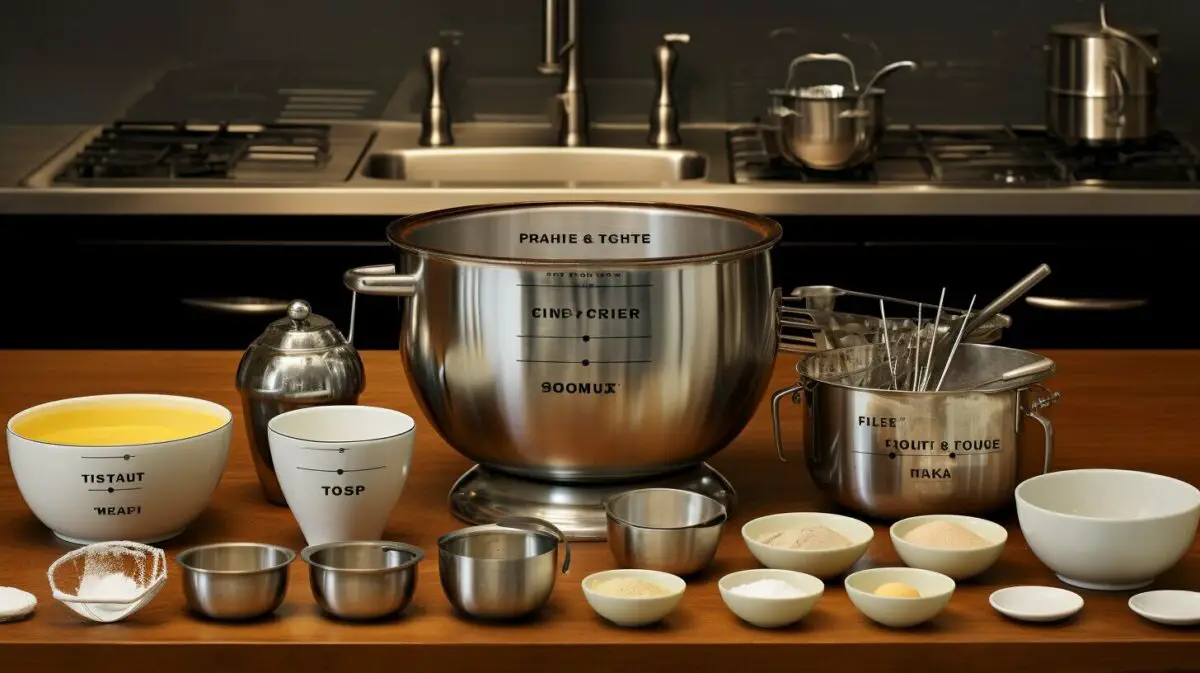
Tablespoon Conversion Reference Guide
To help you navigate different recipes and measurements, here is a handy conversion table for tablespoons:
| Tablespoons | Cup | Fluid Ounces | Milliliters |
|---|---|---|---|
| 1 | 1/16 | 0.5 | 15 |
| 2 | 1/8 | 1 | 30 |
| 4 | 1/4 | 2 | 60 |
| 8 | 1/2 | 4 | 120 |
| 16 | 1 | 8 | 240 |
Whether you’re a seasoned chef or just starting your culinary journey, understanding the versatility and importance of the tablespoon will greatly enhance your cooking skills. So grab your measuring spoons and get ready to create delicious dishes with precision and confidence!
Exploring Quarter Cups
Quarter cups are an essential part of the American measurement system and provide a convenient way to measure ingredients. In cooking and baking, precise measurements are crucial for achieving the desired results. Understanding the volume measurement of a quarter cup is important for following recipes accurately and achieving balance and accuracy in your dishes.
When it comes to volume conversions, a quarter cup is equivalent to 4 tablespoons. This means that if a recipe calls for a quarter cup of an ingredient, you can measure it out by using 4 tablespoons. Quarter cups are often used for liquids, such as milk or oil, but can also be used for dry ingredients like flour or sugar.
Using the right measuring cups is essential for accurate results. In the American measurement system, a cup is equal to 16 tablespoons. This means that you can convert between tablespoons and cups by dividing or multiplying by 16. It’s important to note that in the Metric System, 1 cup is equal to 237 mL, which is a different conversion factor.
| Volume Measurement | US Customary System | Metric System |
|---|---|---|
| 1 cup | 16 tablespoons | 237 mL |
| 1 tablespoon | 1/16 cup | 15 mL |
| 1 quarter cup | 4 tablespoons | 59 mL |
Now that you understand the conversion between tablespoons and a quarter cup, you can confidently measure ingredients and follow recipes accurately. Remember to use the appropriate measuring cups for liquids and dry ingredients, and refer to conversion tables like the one provided above for other volume measurements.
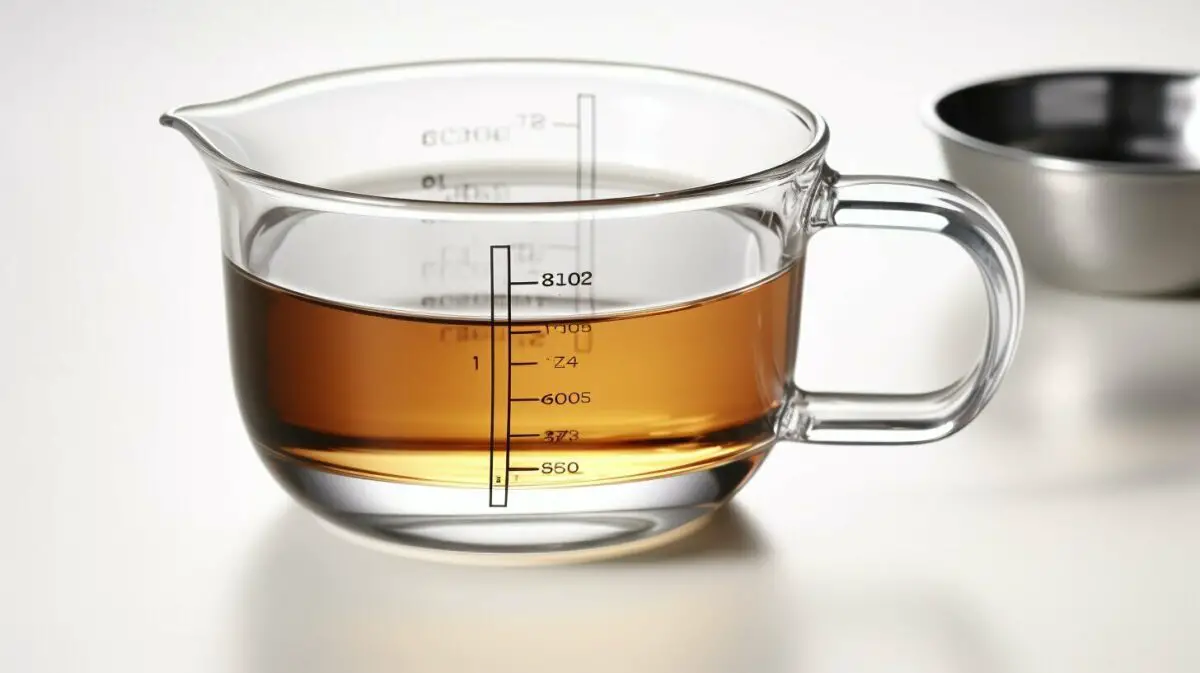
In addition to the conversion between tablespoons and a quarter cup, there are other equivalents you should be aware of for efficient recipe preparation. These conversions will save you time and ensure accuracy in your cooking.
Here are some useful equivalents:
- 1 cup is equivalent to 16 tablespoons or 8 fluid ounces
- 1 tablespoon is equivalent to 0.0625 cups or 0.5 fluid ounces
- 4 tablespoons is equal to a quarter cup
- 8 tablespoons is equal to half a cup
- 16 tablespoons is equal to a full cup
Knowing these conversions will give you the flexibility to adjust your recipes according to your preferences and the quantities of ingredients you have on hand. It’s important to have a good understanding of these equivalents to achieve the desired taste and texture in your dishes.

| Tablespoons | Cups |
|---|---|
| 1 | 0.0625 |
| 2 | 0.125 |
| 3 | 0.1875 |
| 4 | 0.25 (1/4) |
| 5 | 0.3125 |
| 6 | 0.375 |
| 7 | 0.4375 |
| 8 | 0.5 (1/2) |
Having a clear understanding of these conversions will help you navigate your recipes more efficiently and make adjustments as needed. With these equivalents in mind, you’ll be able to create delicious and perfectly proportioned dishes every time.
Understanding the Cup Measurement
The cup is an essential measurement tool that provides a convenient way to measure ingredients in the kitchen. Whether you’re cooking or baking, the cup allows for precise measurements and helps ensure consistent results in your recipes.
When it comes to measuring ingredients in cups, it’s important to note that there are different types of cups used for liquid and dry ingredients. Liquid measuring cups typically have a spout and are designed to be filled to the brim, while dry measuring cups are more compact and require ingredients to be leveled off with a flat edge for accuracy.
To help you visualize the conversion between tablespoons and cups, here’s a simple table:
| Tablespoons | Cups |
|---|---|
| 1 | 1/16 |
| 2 | 1/8 |
| 4 | 1/4 |
| 8 | 1/2 |
| 16 | 1 |
As you can see, there are 4 tablespoons in a quarter cup, which is equivalent to 2 fluid ounces or 59 mL. Understanding this conversion will come in handy when following recipes that call for a specific amount of tablespoons or cups.
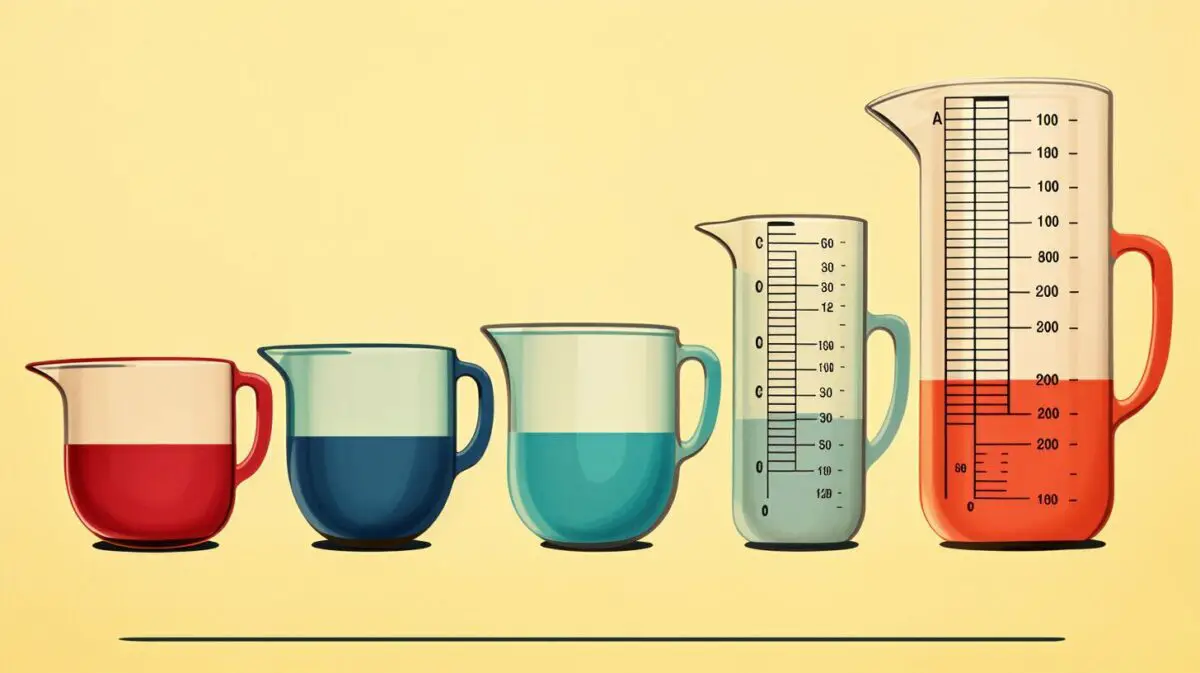
By using the right measuring cups for your ingredients, you can ensure accurate results and maintain the integrity of your recipes. So, next time you’re in the kitchen, remember the importance of the cup measurement and its role in creating delicious dishes.
Cup Equivalents in Different Systems
Cups can have different measurements depending on the system you use, whether it’s the US Customary System or the Metric System. In the US Customary System, 1 cup is equal to 16 tablespoons, while in the Metric System, 1 cup is equal to 237 mL.
Understanding these cup equivalents is essential for accurate ingredient measurement in the kitchen. Whether you’re following a recipe from an American cookbook or trying out a recipe from a website using metric measurements, knowing the conversion between tablespoons and cups will help you achieve the desired results.
“Accurate measurements are the foundation of successful cooking.”
Using the right measuring cups is crucial for achieving accurate results in your recipes. Measuring cups come in liquid and dry forms, and they are specifically designed to measure different types of ingredients. Liquid measuring cups usually have a spout and markings on the side for precise measurement, while dry measuring cups have a flat top for leveling off ingredients.
| Measurement | US Customary System | Metric System |
|---|---|---|
| 1 Cup | 16 tablespoons | 237 mL |
| 1 Tablespoon | 1/16 cup | 15 mL |
| 1 Fluid Ounce | 2 tablespoons | 30 mL |
| 1 Milliliter | 0.067 tablespoons | 0.004 cups |
Having a clear understanding of cup equivalents and using the appropriate measuring cups will ensure consistency in your recipes and help you achieve the desired outcome in your culinary creations.
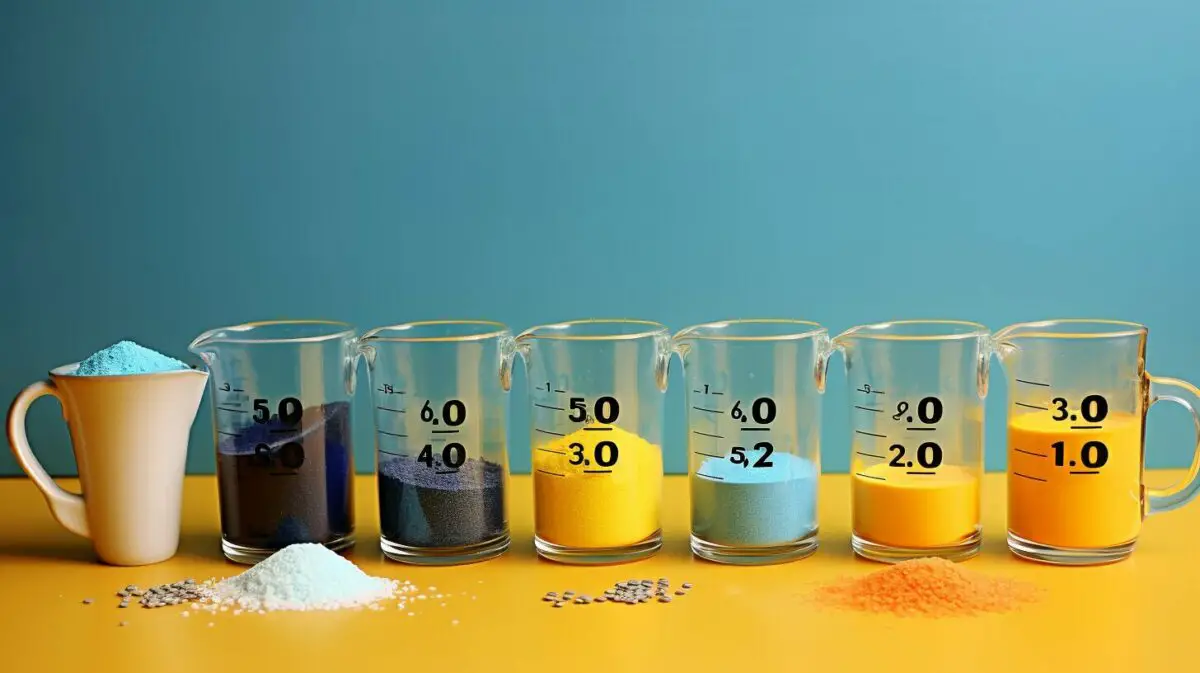
Proper measuring cups are a chef’s best friend when it comes to achieving accurate and consistent results in the kitchen. Whether you’re a seasoned cook or just starting your culinary journey, using the right measuring cups is essential for precision in your recipes.
When it comes to measuring ingredients, kitchen measurements can make all the difference. Accurate measurements ensure that your dishes turn out just the way you intended, with the right balance of flavors and textures. Whether you’re baking a cake, making a sauce, or following a complex recipe, using the correct measuring cups is crucial.
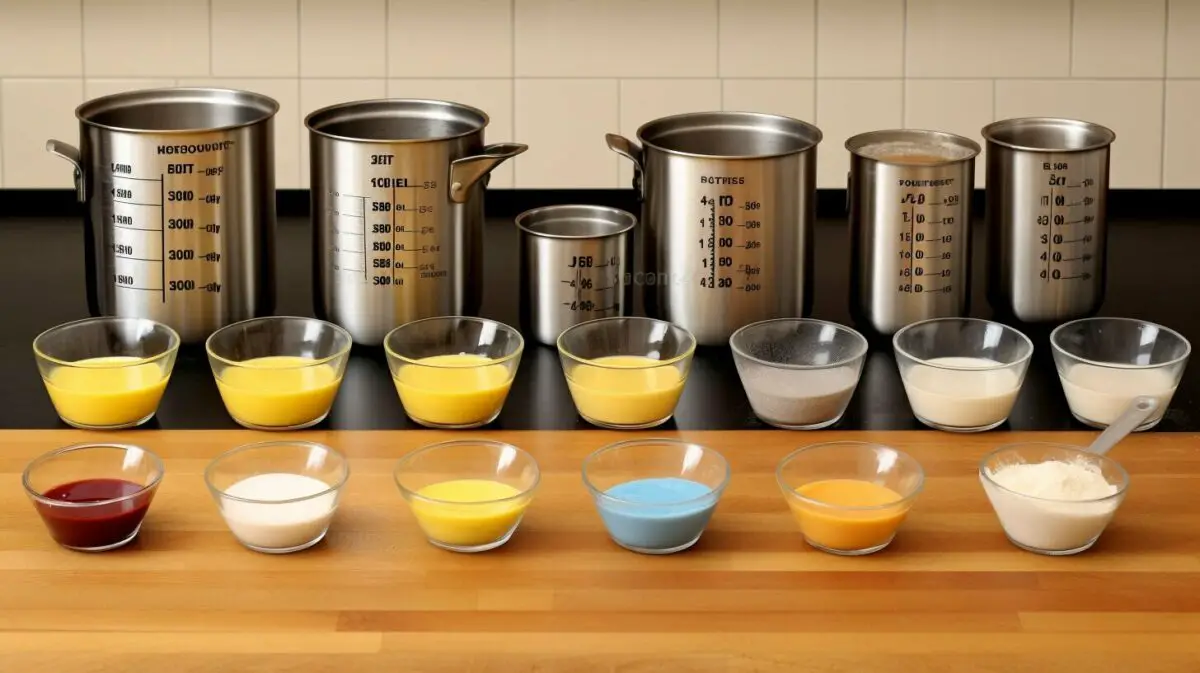
Measuring cups come in different sizes and are designed for specific types of ingredients. Liquid measuring cups are typically transparent and have spouts for easier pouring. These cups are used to measure liquids such as water, milk, or oil. On the other hand, dry measuring cups are usually made of metal or plastic and are used to measure dry ingredients like flour, sugar, or spices.
Using the wrong measuring cup can lead to inaccurate measurements and affect the outcome of your recipe. Imagine trying to bake a cake with too much flour or too little sugar—it could throw off the texture and flavor completely. By using the appropriate measuring cups, you can ensure that your ratios and proportions are just right, resulting in delicious dishes every time.
Other Useful Conversions
In addition to tablespoons and quarter cups, there are other conversions worth knowing, such as teaspoons, fluid ounces, and milliliters to cups. These conversions can come in handy when following recipes or working with various ingredients.
Let’s start with teaspoons. If you’re ever in need of a cup measurement, you’ll be pleased to know that there are 48 teaspoons in a cup. This conversion is particularly useful when working with small quantities of ingredients that require precise measurements.
Another common conversion is from fluid ounces to cups. If your recipe calls for 8 fluid ounces, you can easily convert that to 1 cup. This is especially helpful when dealing with liquids, such as water or milk, that are often measured in fluid ounces.
For those who prefer using the metric system, it’s important to know the conversion from milliliters to cups. If you have 240 milliliters, that is equivalent to 1 cup. This conversion allows for consistency when working with international recipes or using a kitchen scale that measures in milliliters.
| Conversion | Equivalent |
|---|---|
| 48 teaspoons to cup | 1 cup |
| 8 fluid ounces to cup | 1 cup |
| 240 milliliters to cup | 1 cup |
Knowing these conversions will help you navigate recipes with ease and ensure accurate measurements for successful cooking and baking.
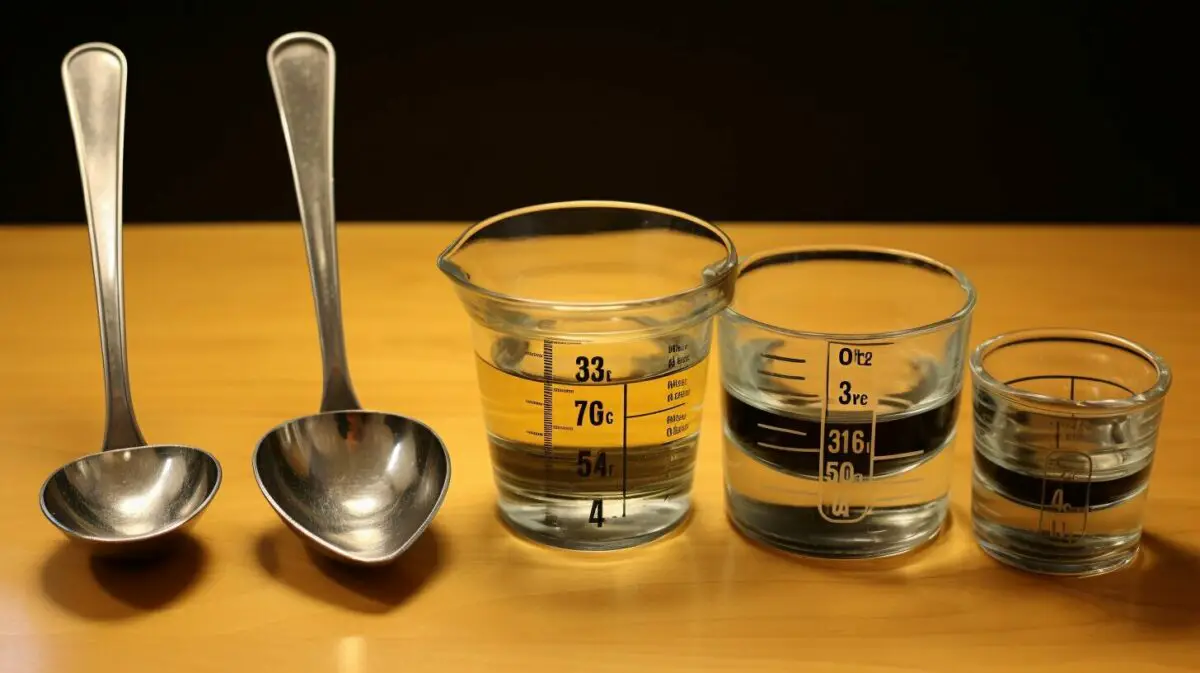
Aside from teaspoons, fluid ounces, and milliliters to cups, there are other useful conversions that you may encounter in the kitchen. Here are a few examples:
- 1 cup is equal to 16 tablespoons.
- 1 cup is equal to 8 fluid ounces.
- 1 cup is equal to approximately 237 milliliters.
These conversions can save you time and effort when it comes to measuring ingredients accurately for your recipes.
Conversion Reference Guide
A conversion reference guide is an invaluable tool for any chef, providing quick and accurate conversions between different volume measurements. Whether you’re following a recipe, experimenting with new flavors, or simply need to convert measurements for a specific dish, having a reliable reference guide at your fingertips saves time and ensures precise results.
Volume conversions can be confusing, especially when working with different measurement systems. A well-organized conversion table or chart simplifies the process, allowing you to effortlessly convert between tablespoons, cups, fluid ounces, milliliters, and more. With a comprehensive reference guide, you no longer have to search for conversion calculators or guess the correct measurements.
| Tablespoons | Cups | Fluid Ounces | Milliliters |
|---|---|---|---|
| 1 | 1/16 | 0.5 | 15 |
| 2 | 1/8 | 1 | 30 |
| 4 | 1/4 | 2 | 60 |
| 8 | 1/2 | 4 | 120 |
“A well-organized conversion table or chart simplifies the process.”
Having a conversion table that includes common measurement equivalents allows you to easily scale recipes up or down, ensuring consistent taste and texture. Whether you’re converting tablespoons to cups, fluid ounces to milliliters, or any other conversion, a reliable reference guide is your go-to resource in the kitchen.
So, the next time you find yourself wondering how many tablespoons are in a quarter cup, or need to convert any other volume measurement, turn to your trusty conversion reference guide. It will be your secret weapon for precision in the kitchen, making your culinary creations a breeze.

US customary units and American measurements are the standard in American cookery, and knowing their volume conversion factors is essential for precise cooking. Whether you’re a professional chef or a home cook, understanding these units will help you navigate recipes and achieve accurate results.
The most commonly used volume measurements in the US customary system include teaspoons, tablespoons, cups, and fluid ounces. To convert between these units, it’s important to know their respective conversion factors. For example, there are 3 teaspoons in a tablespoon, 16 tablespoons in a cup, and 8 fluid ounces in a cup.
| US Customary Units | Conversion Factors |
|---|---|
| 1 tablespoon | 3 teaspoons |
| 1 cup | 16 tablespoons or 8 fluid ounces |
These conversion factors allow you to easily switch between different volume measurements and ensure accuracy in your recipes. It’s important to note that these conversions only apply to the US customary system and may not be applicable in other measurement systems.
When cooking or baking, using the right measuring cups is also crucial for precise ingredient measurement. There are separate measuring cups for liquid and dry ingredients, each with its own design to ensure accurate measurements. Liquid measuring cups usually have a spout and markings for different volumes, while dry measuring cups have straight sides and can be leveled off for precise measurements.

By familiarizing yourself with US customary units and their volume conversion factors, you’ll be able to confidently follow recipes, create delicious dishes, and achieve consistent results in your cooking and baking endeavors.
Mastering Measurements for Success in the Kitchen
Mastering measurements is an essential skill that can significantly enhance your culinary skills and ensure success in the kitchen. Whether you are a beginner or an experienced chef, understanding and accurately measuring ingredients is crucial for achieving delicious and consistent results in your recipes. From baking delicate cakes to creating savory sauces, precise kitchen measurements are the foundation of good cooking.
When it comes to cooking measurements, accuracy is key. Knowing how to convert between different units, such as tablespoons, cups, and fluid ounces, allows you to follow recipes with ease and confidence. For example, did you know that there are 4 tablespoons in a quarter cup? This simple conversion can make a big difference in the outcome of your dishes.
To ensure accurate measurements, it is important to use the right tools. Investing in a set of high-quality measuring cups and spoons is essential. These tools are designed to provide precise measurements for both dry and liquid ingredients. Using the correct measuring cup for each type of ingredient ensures that you are adding the right amount, which can make or break a recipe.
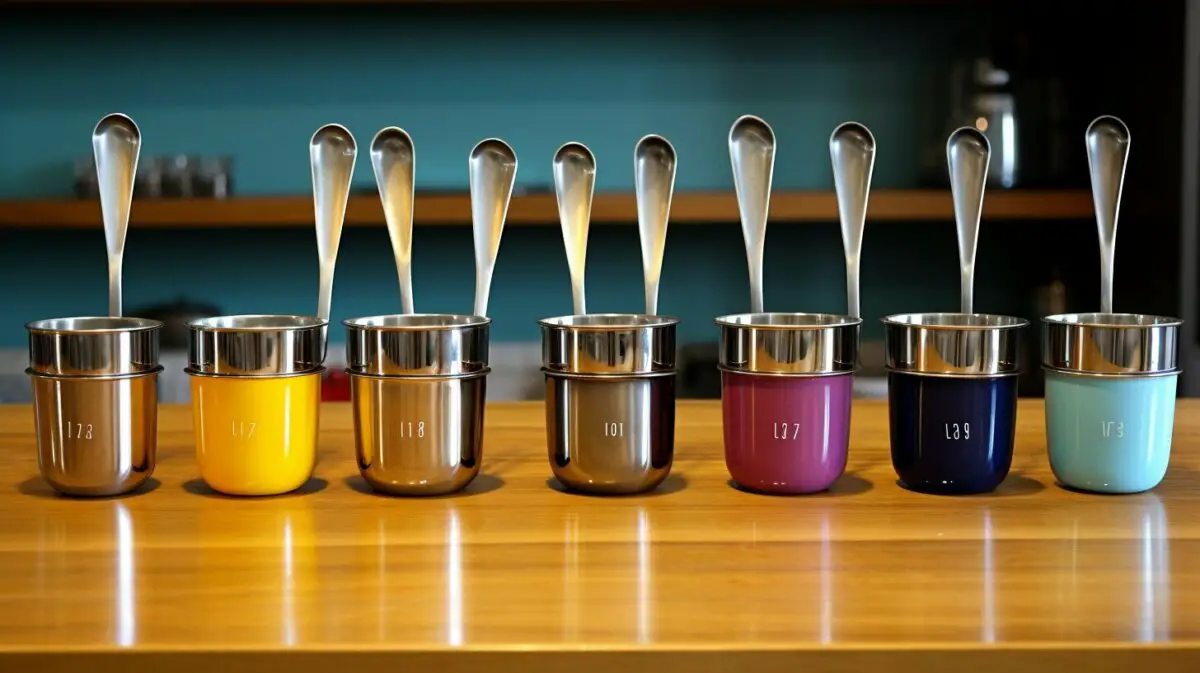
In addition to mastering kitchen measurements, understanding recipe measurements is equally important. Many recipes provide measurements in both volume (cups, tablespoons) and weight (ounces, grams). Depending on the type of recipe and the ingredients involved, using weight measurements can offer more accuracy and consistency. Investing in a kitchen scale can be a game-changer for serious home cooks.
So, whether you’re a seasoned chef or just starting your culinary journey, taking the time to master kitchen measurements will undoubtedly elevate your cooking skills and ensure that your dishes turn out delicious every time. With the right tools and a little practice, you’ll be able to follow recipes with ease, make necessary conversions, and create mouthwatering meals that will impress family and friends.
Experimenting with Confidence
With a solid understanding of measurements and conversions, you can confidently experiment in the kitchen, creating delightful dishes that reflect your culinary creativity. Knowing how to convert between different measurements, such as tablespoons and quarter cups, allows you to explore new ingredient combinations, ratios, and proportions with ease.
When experimenting with ingredients, it is essential to maintain a balance and consider the proportions. Understanding cooking measurements and recipe measurements helps you achieve the desired taste, texture, and consistency in your dishes. Whether you’re adjusting a recipe or creating something entirely new, having a strong foundation in measurements gives you the freedom to unleash your culinary imagination.
Take advantage of the versatility of different ingredients and explore the possibilities. Use your knowledge of measurements and conversions to create unique flavor profiles and innovative recipes. By experimenting with ingredients, ratios, and proportions, you can elevate your culinary skills and surprise your taste buds with exciting new dishes.

Remember, accuracy is key when it comes to measuring ingredients. Using the right measuring cups ensures consistent results in your recipes. Differentiate between liquid and dry measuring cups to get precise measurements for both liquid and solid ingredients. This attention to detail will make a difference in the final outcome of your culinary creations.
| Conversion Chart | Tablespoons | Quarter Cup |
|---|---|---|
| 1 | 1 tablespoon | 0.25 cup |
| 2 | 2 tablespoons | 0.5 cup |
| 3 | 3 tablespoons | 0.75 cup |
| 4 | 4 tablespoons | 1 cup |
Now armed with the knowledge of measurements and conversions, go forth and experiment with confidence in the kitchen. Embrace your culinary curiosity, explore different ingredients and techniques, and let your creativity shine through your delicious creations!
Conclusion – How Many Tablespoons in a Quarter Cup
Knowing the conversion between tablespoons and a quarter cup, along with other volume measurements, is a valuable asset for any chef looking to achieve culinary mastery. In American cookery, there are 4 tablespoons in a quarter cup, which is equivalent to 0.5 fluid ounces or 15 mL.
The tablespoon is a commonly used unit of measurement in cooking and baking, allowing for precise ingredient measurement. It is important to use the right measuring cups for accurate results. Cups, available in liquid and dry forms, are essential tools in the kitchen. In the US Customary System, 1 cup is equal to 16 tablespoons, while in the Metric System, 1 cup is equal to 237 mL.
Understanding these conversions not only ensures consistency in your recipes but also allows for experimentation with ingredients, ratios, and proportions. As a chef, having a good grasp of measurements and conversions gives you the freedom to create unique and delicious dishes with confidence.
So next time you’re in the kitchen, remember the importance of accurate measurements, whether it’s converting tablespoons to a quarter cup or other volume equivalents. With this knowledge, you’ll be well-equipped to follow recipes precisely and achieve the desired results in your culinary creations.
FAQ – How Many Tablespoons in a Quarter Cup
Q: How many tablespoons are in a quarter cup?
A: There are 4 tablespoons in a quarter cup.
Q: What is the equivalent of a tablespoon in fluid ounces and milliliters?
A: A tablespoon is equivalent to 0.5 fluid ounces or 15 mL.
Q: How many tablespoons are in a cup?
A: In the US Customary System, 1 cup is equal to 16 tablespoons.
Q: What is the metric equivalent of 1 cup?
A: In the Metric System, 1 cup is equal to 237 mL.
Q: Why is it important to use the right measuring cups?
A: Using the right measuring cups ensures accurate results in your recipes.
Q: What are the other equivalents of tablespoons and cups?
A: Other equivalents include 8 tablespoons to half a cup and 16 tablespoons to a whole cup.
Q: What are the different types of measuring cups?
A: There are liquid measuring cups and dry measuring cups.
Q: What are some other useful conversions to know?
A: Other useful conversions include 48 teaspoons to a cup, 8 fluid ounces to a cup, and 240 milliliters to a cup.
Q: Where can I find conversion reference guides?
A: Conversion tables, calculators, and charts are available online and in cooking reference books.
Q: What are some important volume conversion factors?
A: In the US Customary System, 1 cup is equal to 16 tablespoons, 1 tablespoon is equal to 3 teaspoons, and 1 fluid ounce is equal to 2 tablespoons.
Q: How can mastering measurements improve my cooking skills?
A: Understanding measurements allows you to follow recipes accurately and create delicious dishes with consistent results.
Q: How can I experiment confidently with measurements?
A: Once you have a good grasp of measurements and conversions, you can confidently experiment with ingredients, ratios, and proportions in your cooking.
Q: Why is accurate measurement important in cooking?
A: Accurate measurement ensures the desired texture, taste, and consistency in your recipes.
Q: Are there any volume conversions specific to the US Customary System and American measurements?
A: Yes, understanding the volume conversion factors in the US Customary System and American units is important for navigating recipes.
Q: How can proper measuring cups help achieve accurate results?
A: Using the correct measuring cups for liquid and dry ingredients ensures precision in your measurements.
Q: Why is it helpful to have a conversion reference guide?
A: A conversion reference guide provides quick access to volume equivalents, conversion factors, and other useful information for measurements.
Q: How does understanding tablespoons and quarter cups benefit my cooking?
A: Knowing the conversion between tablespoons and quarter cups helps you accurately measure ingredients and follow recipes.
Our Friends:
- https://www.theharvestkitchen.com/how-many-tablespoons-in-1-4-cup/
- https://bakeitwithlove.com/tablespoons-in-1-4-cup/
Related Recipes:
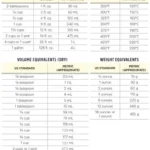 How Many Cups Are in a Liter: Unlocking the Mystery
How Many Cups Are in a Liter: Unlocking the Mystery
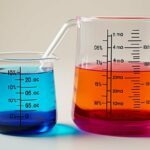 How Many Milliliters in an Ounce? (Perfect Measurement Conversion Guide)
How Many Milliliters in an Ounce? (Perfect Measurement Conversion Guide)
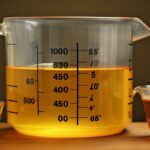 How Many Ounces Are in 750 ml? (Measurement Conversion Guide)
How Many Ounces Are in 750 ml? (Measurement Conversion Guide)
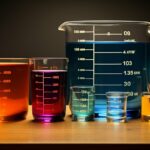 How Many Fluid Ounces in a Cup? (Perfect Measurement Conversion Guide)
How Many Fluid Ounces in a Cup? (Perfect Measurement Conversion Guide)
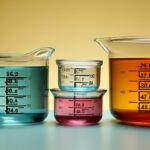 How Many Ounces Are in a Quart? (Ultimate Measurement Conversion Guide)
How Many Ounces Are in a Quart? (Ultimate Measurement Conversion Guide)
 How Many Ounces Are in a Pint? (Perfect Measurement Conversion Guide)
How Many Ounces Are in a Pint? (Perfect Measurement Conversion Guide)
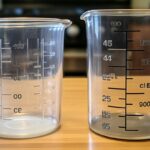 How Many Quarts in a Liter? (Perfect Measurement Conversion Guide)
How Many Quarts in a Liter? (Perfect Measurement Conversion Guide)
 How Many Ounces Are in a Cup? (Perfect Measurement Conversion Guide)
How Many Ounces Are in a Cup? (Perfect Measurement Conversion Guide)



